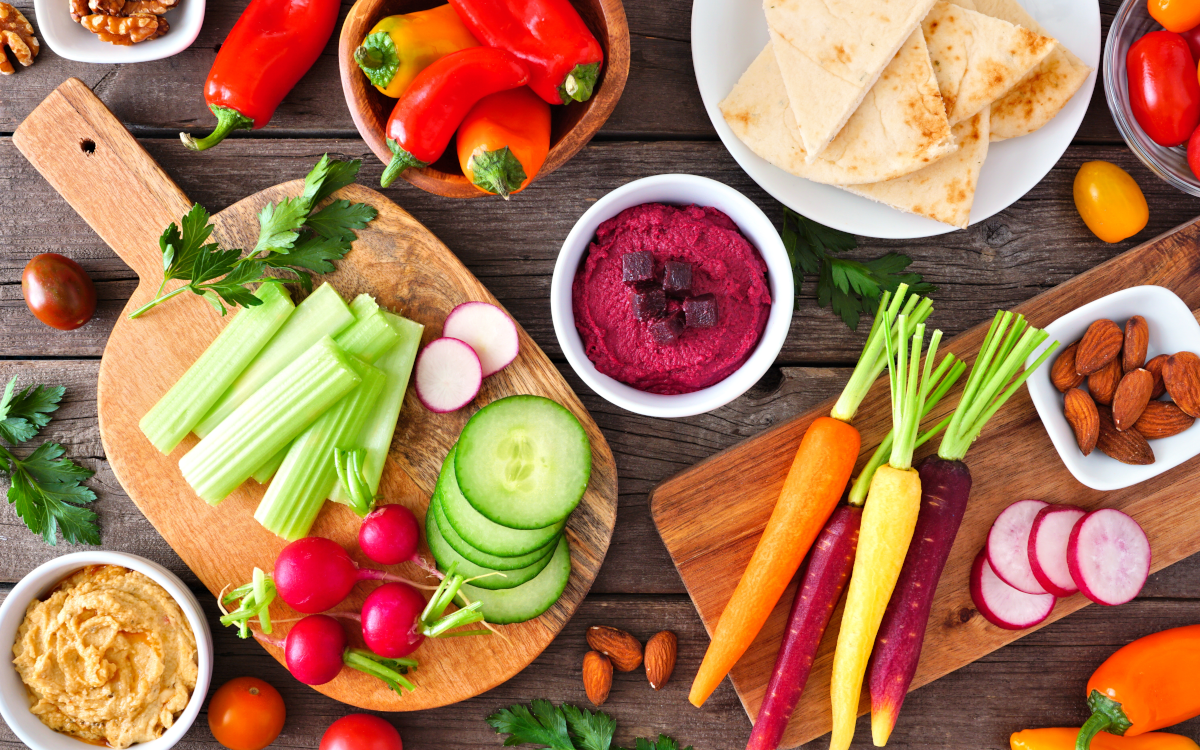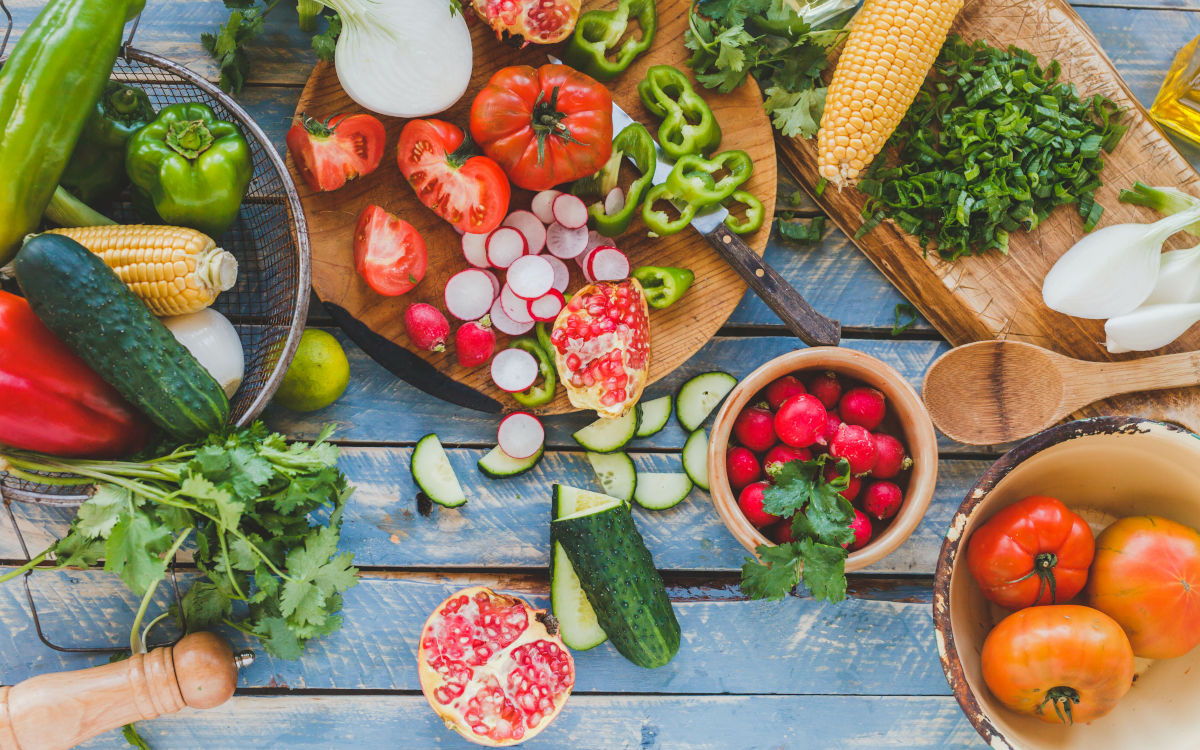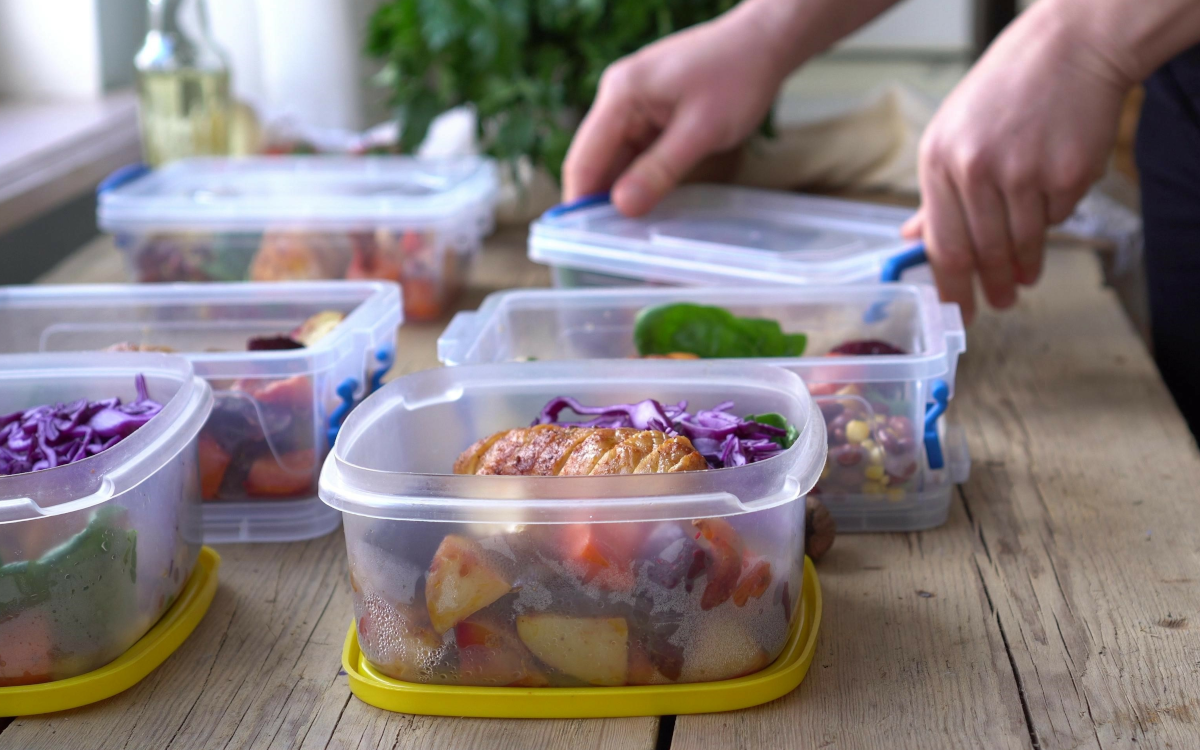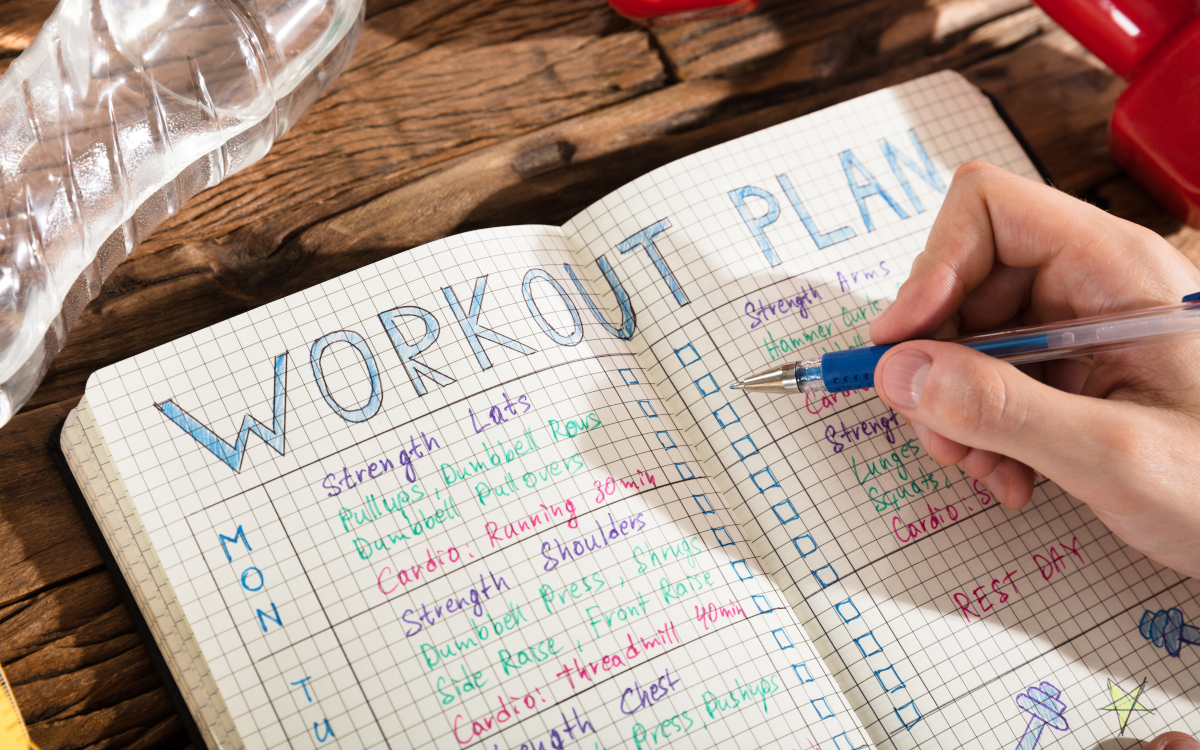Spring is here, which means it’ll be summer before we know it! Longer days, warmer weather, sunny skies—it’s a great time of year.
There’s usually lots to do and celebrate over the summer months too. Weddings, parties, barbecues, vacations…but with so much on the sunny social calendar, there can come a pressure to look your best.
Social media will soon fill up with progress pictures as people start to become “beach-body ready”. They spend hours in the gym each day and starve themselves of their favorite foods and drinks—it’s daunting to even think about.
Fortunately, that isn’t the only way to shed some pounds, look and feel healthy, and boost your mood and confidence as we approach an exciting time of the year.
It’s all about making small and sustainable changes. Nothing major, nothing difficult, and nothing that will upset your daily life. And we’ll show you how to do it!
We’ve got some simple tweaks and top tips for you that you can start to implement now, so that you’re ready for whatever summer throws at you.

There are 12 weeks or so until summer officially kicks off, so that gives you a solid timeframe to work with. You can make some real and achievable health changes in that time, without having to change your whole life around to do so.
Enough of the build-up, let’s dive straight into 12 ways to transform your health and boost your fat-burning results so you can feel your most fit and fabulous as you make a splash this summer.
12 simple tweaks for lasting results
Who really has the time or energy for complicated fitness plans or impossible diets? Not us.
The good news is that you don't have to go to extremes to see results.
Finding ways to make healthier choices will not only help you shed the pounds—it’ll also help you maintain that progress in the long run.
Try these few simple health tweaks and follow our smart tips to jumpstart your summer fitness journey—so that you can become the best version of you.
1. Make healthy diet swaps
One of the big reasons that “diets” don’t work in the long run is that they’re not sustainable.
If it’s hard to stick to, something is eventually going to give. Even the mindset behind dieting sets you up to lose. Just think about the phrases we use…
“I’m on a diet.”
“The diet starts on Monday.”
“I can’t eat that on this diet.”
They make it clear that it’s something to endure, that it’s short-term, and that it will inevitably end.
The trick is to view eating healthy foods as a normal part of your lifestyle, not a diet that you’re trialing (and suffering through) for a few weeks.
The way to do that is by making minor adjustments and tweaks here and there. Basically, to make the healthier choice a bit more regularly.

Here are some really easy meal and snack swaps to get you started…
- Swap French fries for baked sweet potato fries
- Swap white or refined grains for brown/whole grains
- Swap potato chips for popcorn
- Swap bagels for rice cakes
- Swap sandwiches for wraps
- Swap mayonnaise for hummus
- Swap fruit juices for pieces of fresh fruit
- Swap milk chocolate for dark chocolate (70%+ cacao)
- Swap cappuccino for black coffee
- Swap milkshakes for smoothies
- Swap full-fat milk for oat or almond milk
These are all savvy little diet swaps that won’t impact your enjoyment of food and drinks. But the changes in calories really add up over the course of a day, a week, a month, a year…
Cutting 500 calories from your daily food intake should lead to around a pound per week of weight loss – and these easy switches are a great place to start.
2. Don’t drink your calories
One of the best swaps you can make is to ditch sugary drinks for water.
Sodas and juices contain lots of calories and have a high sugar content, which adds massively to your overall intake each day.
Switch them out for a glass of water whenever you’re thirsty instead. It’s calorie-free, refreshing, much more hydrating, and far better for your health and waistline than soft drinks are.
Water also plays a crucial role in regulating your body temperature, lubricating joints, and transporting nutrients throughout your body.
On the flipside, dehydration can lead to fatigue, headaches, muscle cramps, and decreased exercise performance.
To make sure you stay properly hydrated…
- Carry a water bottle with you throughout the day so you’ve got easy access to water (and won’t be tempted to buy that bottle of cola)
- Drink water before, during, and after exercising to replace fluids lost through sweat
- Eat more hydrating foods like watermelon, cucumbers, and oranges
3. Eat more vegetables
Losing weight doesn’t have to be about eating less, it’s about creating smart eating habits.
That’s where vegetables can swoop in to save the day. These natural goodies provide plenty of nutrients, fiber, and volume to your meals and snacks—without going overboard on calories.

You can really go to town on healthy veggies, which will fill you up and keep you satisfied throughout the day without having to reach for junk foods.
4. Prioritize more protein
Along with veggies, lean proteins like chicken, fish, tofu, and beans should be high up on the nutrition agenda when planning your weekly meals.
Protein has a higher thermic effect than carbs and fats, meaning your body has to use up more energy and calories just to digest it.
When you eat protein, around 20 to 30% of its calorie content is burnt purely through being digested and metabolized. Whereas only around five to 10% of carbs and up to 3% of fats are burned off in the same way. The rest can potentially be stored as body weight if not used as energy throughout the day.
Healthy proteins will also boost your metabolism, promote muscle growth, and curb your hunger cravings.
5. Eat mindfully
Paying attention to your hunger cues, eating slowly, using smaller plates, and savoring each bite can all prevent overeating while promoting a healthier relationship with food.
It takes up to 20 minutes for your brain to tell your stomach it’s full—and you can wolf down a lot of calories in that time.
Things like chewing each mouthful for longer to aid digestion and putting your fork down between bites will help you slow down your eating speed. You’ll end up needing to eat less to feel full.
Likewise, clearing a small plate will still mentally feel like you’ve eaten your full meal despite the smaller portion sizes.
6. Keep on moving
Burning calories doesn’t just happen when you exercise. Every movement you make requires energy, so the trick is to find opportunities to stay active throughout the day.
Whether it's taking a walk, doing household chores, dancing around the house, or stretching regularly, these all contribute to increased calorie burn and your overall fitness levels.

Find exercises and physical activity that you enjoy doing, too. It will seem less like hard work if you’re having fun.
If the idea of running on a treadmill or lifting weights fills you with dread, do something else. There are lots of options, like…
- Swimming
- Cycling
- Dancing
- Fitness classes (e.g. Zumba)
- Yoga
- Playing sports
- Hiking
- Rock climbing
- Martial arts
- Kayaking
- Skipping
- Trampolining
The possibilities are endless, so don’t worry about what anybody does. Just find something you enjoy and do it consistently. You do you!
7. Go to sleep
Sleep is an important part of our lives, not just for keeping our energy levels up and our minds sharp, but regulating hormones and reducing unhealthy food cravings, too.
It’s not lazy to get around seven to nine hours of sleep each night, it’s crucial! Don’t ever feel guilty about getting an early night so that you can wake up fully refreshed, recharged, and at your very best the next day.
8. Limit processed foods
Junk foods like candy, cookies, cakes, sodas, fast food, and any other kind of processed goods are some of the worst things you can eat if you want to lose body fat.
They’re usually crazy-high in added sugars and unhealthy fats—which our bodies aren’t that well equipped to deal with. Stick to whole foods like complex carbs, lean proteins, and healthy (unsaturated) fats, as well as more fruits and vegetables.
Cutting processed food out completely can be difficult. So drop them out steadily and replace your favorite junk foods with healthy alternatives—like ones from the list above.
9. Be prepared
Take an hour or two over the weekend to pre-plan and prep your meals for the week ahead. If you’ve already whipped up and prepared a healthy meal beforehand, you'll avoid last-minute unhealthy options when you're pressed for time.

It’s a big time-saver, too. Without having to cook from scratch each night, you’ll have more time to spend with your family, socialize with friends, exercise, or just have some quality time to yourself.
10. Know what you’re eating
If you don’t regularly look at the labels on food packaging, then start now and make it a habit. You’ll be shocked to know how unhealthy some foods are, despite being marketed as ‘good for you’.
When you understand exactly what goes into store-bought items, you’ll start to eat healthier and start dropping even more body weight.
11. Track what you do
The only way to really know if you’re making progress is to track and measure your diet, exercise, and how you feel..
A safe and healthy rate of weight loss is around one to two pounds per week—which is absolutely doable when you make the changes mentioned above.
If you hit this benchmark every week, you can lose up to 24 lbs by summer. That’s over a stone and a half of body fat gone without putting in too much effort.
That should be motivation enough. But tracking your workouts and meals will also hold you accountable. If you know you have to write it down, you’ll want to make smart choices. The evidence will speak for itself when summer rolls around.
Don’t get too hung up on the numbers themselves, though. Just be aware of the trends. If you lose two pounds one week but stay the same the next week, don’t worry. You’re still going in the right direction, and it will all add up over the next few weeks.

Here are some great ways to keep on top of this…
Take measurements
Measure your body at specific points, such as your waist, hips, and arms. This will help you see huge changes in your body composition over time.
Use a fitness tracker
Wearable devices like fitness watches or smartphone apps can track your steps, heart rate, and the calories you burn. It’s all really valuable data for assessing your progress.
Keep a workout journal
Record your workouts, including the exercises, sets, and repetitions performed. This will help you track your progress and identify areas for improvement.
Take photos
Take progress photos of yourself regularly to visually document your transformation. Comparing your before and after photos can be incredibly motivating and rewarding.
12. Take a supplement to boost your metabolism
One of the easiest things you can do to speed up your rate of weight loss is to take a supplement that boosts your metabolism and reduces your food cravings.
This is exactly what PhenQ does.
It contains natural ingredients that boost metabolism for enhanced weight loss, enhance energy levels, curb hunger, and reduce the accumulation of body fat.
It’s a huge reward for the least amount of effort.
Start now to be ready for the summer

Losing and keeping weight off is a long-term goal. Sure, you can set big targets to lose a certain amount of weight by a certain time. But it’s these small, sustainable changes that make it much more likely that you’ll reach and maintain your goals.
No matter your fitness level or body type, you'll be amazed at the big difference that little tweaks and swaps can lead to.
Summer is the perfect time to get active and make positive changes to your lifestyle…but why wait?
Get a head start by trying these health hacks today to start feeling energized, confident, and ready to take on anything the summer throws your way. Embrace your fitness goals head-on, and let's make this your best summer yet. You’ve got this.




